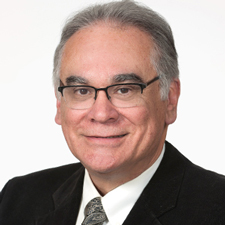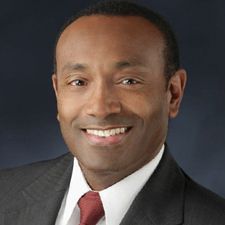
The medical community has an obligation to address structural racism and improve health equity, and the time to do it is now. That was the message delivered by plenary speakers at ABMS Conference 2020 – Virtual held this past September.
The systemic social injustice witnessed by the killing of George Floyd and the grand jury decision regarding Breonna Taylor’s death followed by nationwide protests coupled with COVID-19’s disproportionate impact on underrepresented minority populations have highlighted two concurrent crises facing this country. “We really have a heightened pulpit now to drive an agenda that addresses these racial issues that we have not been able to bring forward before,” stated William A. McDade, MD, PhD, Chief Diversity and Inclusion Officer at the Accreditation Council for Graduate Medical Education (ACGME).
Joining Dr. McDade to speak about improving public health through diversity, equity, and inclusion (DEI) for the 2020 Lois Margaret Nora, MD Endowed Lecture were David Acosta, MD, Chief Diversity and Inclusion Officer at the Association of American Medical Colleges (AAMC), and Patrice A. Harris, MD, MA, Immediate Past President of the American Medical Association (AMA).
“We must find and use our voice to direct progress and demand change,” Dr. Acosta concurred. “I strongly believe that we – faculty, physicians, health care leaders, and administrators – have an obligation to eliminate systemic racism and social injustice in our health care systems and academic medicine for the sake of the health and well-being of those communities we serve, and also for the learners who will become our future health care leaders,” he said.
At this time, developing systems-based solutions to create a more equitable health care system is critical, Dr. Harris said. “We need action at the societal and community level as well as at the individual and family level.”
Addressing DEI at multiple levels

“This work must start, first and foremost, with us as individuals,” Dr. Acosta noted. “We must take pause to self-reflect, explore our world view, and examine our perspectives and assumptions we make based on the stereotypes and racial biases we have.” It also requires self-education. “Learn how the issues of systemic racism affect you personally, your workforce and workplace, patients, and community,” he added.
Steps AAMC has taken to facilitate self-reflection and self-education include publishing a collection of articles about race and racism in Academic Medicine, creating a collection of anti-racism articles on its MedEd Portal, and creating a new website with resources that link racism to health outcomes.
Understanding and acknowledging medicine’s racist past is a key part of self-education. “We need to explore the impact that this history has had on influencing and shaping medicine’s policies, practices, and infrastructure today and ask how we reconcile past inhumane experimentation, exploitation, oppression, and exclusionary practices,” he said.
When AAMC was founded in 1876, its membership was primarily limited to predominantly white medical schools that prohibited admission to people of color, women, and Jews. In 1949, when the National Medical Association petitioned AAMC to stand up against segregation and racial/ethnic and gender discrimination in predominantly white medical schools, AAMC responded by saying it did not interfere with the admissions policies of its member institutions, Dr. Acosta said. It wasn’t until 1968 – after the Civil Rights Act passed – that AAMC committed to ensuring that all minority students had equal and meaningful access to medical schools. In 2007, AAMC’s president/chief executive officer acknowledged its discriminatory past and today continues on its journey toward reconciliation, he added.
Dr. Acosta called on organized medicine to review its history and racial past, and examine its own infrastructures, policies, practices, embedded norms, and cultural and traditional values that are presumed to be race neutral but may in fact sustain racial inequities. “It’s time to collectively identify the subtle manifestations of racism that have been embedded in medical education and in our health systems and have influenced the way we see health care (that is, a privilege versus a right), how we provide access to, and how we deliver health care,” he said. “The pandemic calls for a paradigm shift in our thinking – one that focuses us on delivering health care to all the communities we serve, including the most vulnerable populations.”
The subtle manifestations in admissions policies have resulted in a lack of diverse students matriculating into medical school, Dr. Acosta said. For example, Black students comprise only 7.1 percent of the total medical student enrollment. During the last 40 years, enrollment of Black students has increased by only 1.2 percent. Similarly, underrepresented minority faculty comprise only 9 percent of the total full-time faculty working in American medical schools and Black faculty only comprise 3.5% of the total.
AAMC has launched a new partnership with the National Medical Association to identify systems-based solutions to improve the successful application and enrollment of students of color to medical school. It is evaluating the potential for integrating an educational equity approach that shifts from a “screening out” paradigm to an investment paradigm that holds institutions accountable for their effectiveness on student success outcomes, he explained.
To assess the learning and workplace environments, AAMC has developed several climate and culture assessments for medical schools and teaching hospitals. These include the Foundational Principles of Inclusion Excellence; the Diversity Engagement Survey; and the newest addition, the Diversity, Inclusion, Culture and Equity Inventory, a survey that identifies and evaluates institutional/departmental policies, practices, governance, infrastructure, and operations through a DEI lens.
To address hostile learning and workplace environments, AAMC is offering train-the-trainer workshops to become certified facilitators in implicit bias/micro-aggression trainings for its member medical schools and teaching hospitals. AAMC recently launched a pilot on train-the-trainer workshops in restorative justice practices – another tool that will enable member institutions to address mistreatment, racial tensions, and sexual and gender harassment.
AAMC has launched a population health management framework for GME (residents in training) that presents profiles of successful practices at primary care residency programs that have incorporated population health management principles into education programs. As part of its new strategic plan, AAMC is exploring the feasibility of creating a Center for Health Justice. Additionally, AAMC’s Medical Education Unit has convened experts to develop DEI competencies and milestones across the educational continuum from undergraduate to GME to practicing physicians.
Creating a more equitable health care future

Dr. Harris focused on creating a more equitable health care system, including the steps AMA has taken to improve health equity and increase diversity in medicine.
“Our health care system is complicated. The burden is on the patients and public,” she said. “If we want an equitable system, we have to navigate the burden away from the individual to the system and develop an infrastructure to drive equity.”
One framework that does just that was developed by the Bay Area Regional Health Inequities Initiative, which Dr. Harris highlighted. It illustrates the connection between social inequalities and health and focuses on such measures as the living conditions that decrease health and well-being. The goal is to move people to supportive living conditions and act to change their behaviors or conditions that cause stress and poor health. “It reminds us to look upstream, midstream, and downstream for solutions,” she said.
AMA has advanced health equity by first apologizing, in 2008, for excluding Black physicians from its membership. It hired a Chief Health Equity Officer, Aletha Maybank, MD, MPH, to ensure that equity is embedded across the association, Dr. Harris said.
In 2019, AMA launched its Center for Health Equity to promote equity in care, advocate for health care access and research, increase health workforce diversity and cultural awareness/competency, influence determinants of health, and voice and model a commitment to health equity. In 2020, the Center urged comprehensive tracking of COVID-19 data by race and ethnicity, influenced AMA work to advance medical school curriculum, and launched the Prioritizing Equity online video series.
The Center also helped launch the national Release the Pressure campaign to improve heart health of Black women. AMA partnered with others on the campaign to build trust within the community. “We have to find where the community sees value and partners they trust,” she noted. To demonstrate commitment in its own backyard, AMA participated in West Side United, an initiative to build community health and economic wellness on Chicago’s West Side.
AMA also is working to increase diversity in medicine. In 2019, AMA adopted a policy to establish best practices for the sustainability and success of health care “pathway programs” designed to draw students from diverse backgrounds into the medical field. The AMA Foundation – Minority Affairs Section offers scholarships for fourth-year medical students. The Doctors Back to School™ Program sends minority physicians and medical students into the community to introduce children to professional role models and show kids of all ages from underrepresented racial and ethnic groups that a career in medicine is attainable for everyone. Through the courts, AMA is fighting to uphold the Deferred Action for Childhood Arrivals policy to support medical students and offer support for international medical graduates.
Additionally, AMA is expanding the pipeline for physicians of color by establishing and building on a commitment to diversity, using innovative approaches through the AMA Accelerating Change in Medical Education initiative, improving medical school curriculum and training, and recognizing and addressing implicit bias in selection programs.
Increasing diversity in health care

ACGME is working to increase the numbers of health professions students, trainees, faculty, institutional administrators, and leaders from historically marginalized and excluded populations in health care. The goal of increasing workforce diversity is to achieve health equity, Dr. McDade said. Inclusion is the tool to ensure that diversity is successful.
Increasing diversity in the physician workforce helps eliminate health inequities because medical students who are underrepresented in medicine (URiM) have a greater desire to serve underserved communities, and work in them as practicing physicians, he said. The physician-patient racial/ethnic and language concordance is associated with increased trust, adherence, communication, and outcomes. URiM faculty disproportionately engage in research beneficial to underserved patients and enhance diversity enrollment in clinical trials. Additionally, they serve as role models and mentors to URiM learners, and disrupt stereotypes within the learning environment.
Despite the numerous benefits of increasing diversity in medicine, the medical community has failed to do so. As an example, between 2004-05 and 2018-19, the pipeline for medical graduates who are people of color has not changed much and it hasn’t changed at all for Blacks, Dr. McDade stated.
Changing the structure that will permit greater diversity in the physician workforce won’t be easy, he said. One of the reasons is that the medical community does not believe it has a “culture,” but rather has “timeless truths.” The latter were written by the dominant culture and lack input from diverse individuals, Dr. McDade said, adding, “As we increase diversity, we have the chance to uncloak the existing dominant myths that prevent the change medicine needs to make.”
Remedying structural racism requires examining the ground state; challenging what is; examining structures and written policies; querying unwritten practices and standards; identifying mechanisms in structures, policies, practices, norms, and values; and attending to both what exists and what is lacking.
As an example, when Dr. McDade first arrived at ACGME, he noticed that a larger number of Black residents were being dismissed by certain specialties. Specifically, 23.5 percent of Black residents were dismissed in anesthesiology in 2015-16; a significant increase from years past and 10 times the rate of white residents. ACGME found that in 2012 the American Board of Anesthesiology (ABA) began administering its BASIC exam after the second year of residency instead of after the fourth year when it administered the APPLIED exam. Dr. McDade raised the question: Could this scheduling change have had the unintended consequence of increasing the number of dismissed Black residents?
He began to formulate a hypothesis, one based on the premise that performance disparities during residency along racial lines could be caused by a wealth gap that, though generally persistent throughout residency for Blacks, is less of a performance barrier by the latter half of residency. Black residents generally enter their clinical training with fewer financial resources than whites to afford test preparation opportunities, resulting in limited experience with standardized testing, Dr. McDade said. During residency, however, Black residents have multiple exposures to in-training exams, improving their performance and mitigating stereotype threat (internalized racism) through their experiences. By moving up a pass/fail exam two years earlier in their training, Black residents may be unable to realize the full four-year benefit residency has in dispelling stereotype threat and offering additional opportunities to gain confidence in standardized testing, he said. Program Directors may view failing the BASIC exam as a measure of learner quality and potential increased expense to the program, since the penalty of repeated failures requires the extension of clinical training time as implemented by ABA. Therefore, programs may more likely elect to dismiss a resident who has failed, thus potentially disadvantaging Black residents.
To explore Dr. McDade’s hypothesis, ABA and ACGME are discussing a data-sharing agreement to analyze performance metrics that can paint a more complete picture of residents’ BASIC exam performance and its impact on their clinical training.
Dr. McDade concluded by encouraging all ABMS Member Boards to examine their practices and policies for structural racism to ensure the success of all candidates. Additionally, he urged the boards to collect data on race/ethnicity demographics as a best practice. The latter will promote transparency as well as mitigate aversive racism and reveal where structural racism may be playing an unintended role. “Having the data will drive action and that is what I am asking you in the ABMS community to do,” he said.
ABMS would like to thank President and Chief Executive Officer Richard E. Hawkins, MD, for serving as moderator for this session.
© 2021, American Board of Medical Specialties
Read the Latest Issue of the ABMS Insights Newsletter
-
Read More:
- ABMS Conference |
- ABMS Insights |
- Public Health |
